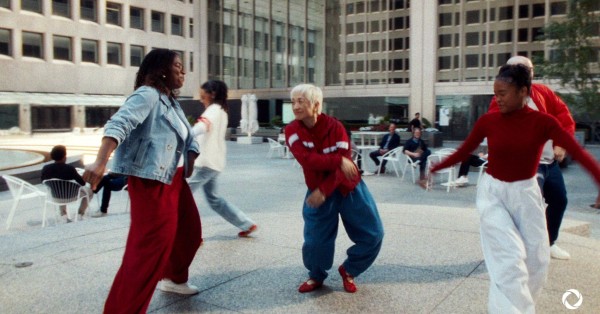The report entitled “5G Infrastructure Market” analyzes the global, regional and local market based on communications infrastructure, core network technology networks, the network infrastructure, frequency of operation, end-use, and region. The report offers thorough analysis of the market’s historical and projected size, along with a trend analysis. The report provides importance of the market’s share, capacities for production of the leading players, a summary of competition strategic imperatives, estimates of annual revenue, development opportunities, summary of production and assessment of competition for the players that are targeted in the market study for 5G infrastructure.
Market Overview and Dynamics
The market for 5G infrastructure is projected to increase by over 50% during the period 2022-2028. A booming demand for high-speed internet with low latency, and the increasing usage of applications that require data have driving the market’s growth. Consumers and businesses are demanding faster networks for various purposes like entertainment online meetings, cloud-based solutions, and many more, which is further fueling the market’s growth.
Additionally, the rising number of devices that are interconnected boosts the need for more bandwidth to handle the rising data flow, thus enabling the requirement for 5G. According to the RationalStat Analysis, the number of active IoT devices will increase by 9.9 billion by 2019 and reach 21.5 billion by 2025. While connections to non-IoT devices will continue to rise, IoT devices will be approximately two-thirds of the connections by 2025, an increase from just one-third in the year prior.
The market for 5G infrastructure globally was estimated at more than US$ 2.6 billion by 2021. It is predicted to exceed US$ 65.0 billion by 2028’s end.
In addition, a surge in cell phone and internet usage, and the growing number of Machine-tomachine (M2M) connections across the globe can further impact the need for 5G infrastructure. RationalStat estimates that the number of global M2M connections to increase by up to 60% from 9.0 billion in the year 2020 to 14.5 billion connections by 2023. The increasing number of M2M connections is a result of the need for increased bandwidth to improve efficiency and effectiveness, thereby increasing the growth of the market.
Based on the fundamental network technology Network function virtualization (NFV) is the dominant technology in the market globally as it manages and creates virtual network functions and expands the network. It is also utilized in 5G wireless networks since it offers energy-efficient and cost-effective solutions.
On the basis of operating frequency, a lower than 6 GHz was the dominant market share in 2021 due to the increase in spending by the major players in the acquisition of the frequencies in mid and low-bands.
Based in this region Asia Pacific is expected to be the dominant player in the 5G infrastructure market thanks to the rapid deployment of 5G networks by private and public players in conjunction with the increasing number of 5G solutions suppliers and manufacturers within the region.
Competition Analysis: Nokia, Ericsson, and Huawei hold a prominent market share
The global 5G infrastructure market consists of a significant number of industry players and observes healthy competition between them. Leading players such as Qualcomm Inc., Huawei Technologies Co., Ltd., Telefonaktiebolaget LM Ericsson, Nokia Corp., Vodafone Group PLC, Intel Corp., Samsung Electronics Co., Ltd., IBM Corp., Siemens AG, Cisco Systems Inc., NEC Corp., and Fujitsu Ltd. hold a dominant position in the 5G infrastructure ecosystem globally. These industry players are making significant investments to gain a competitive edge over other players and as well as increase market share in the market space. Key developments observed in recent years include,
- In January 2022, Telesat joined hands with ENCQOR 5G to conduct demonstrations, trials, and pilots to advance 5G connectivity. The partnership, however, is particularly for industries operating in rural areas in Canada.
- In January 2022, T-Mobile US Inc. and Crown Castle International Corp. announced a 12-year agreement to support a nationwide 5G of T-Mobile network with increased access to Crown Castle’s towers and small cell locations.
RationalStat has segmented the global 5G infrastructure market on the basis of communication infrastructure, core network technology, network infrastructure, operational frequency, end-use, and region.
- By Communication Infrastructure
- Small Cell
- Micro Cell
- Femtocell
- Pico Cell
- Macro Cell
- Radio Access Network (RAN)
- Distributed Antenna System (DAS)
- Small Cell
- By Core Network Technology
- Software-Defined Networking (SDN)
- Network Function Virtualization (NFV)
- By Network Infrastructure
- 5G Standalone
- 5G Non-Standalone
- By Operational Frequency
- Less than 6GHz
- More than 6GHz
- By End-Use
- IT & Telecom
- Consumer Electronics
- Automotive
- Energy & Utilities
- Healthcare
- Others (Media & Entertainment, Transportation, Logistics, etc.)
- By Region
- North America
- US
- Canada
- Latin America
- Brazil
- Mexico
- Rest of Latin America
- Western Europe
- Germany
- UK
- France
- Spain
- Italy
- Benelux
- Nordic
- Rest of Western Europe
- Eastern Europe
- Russia
- Poland
- Rest of Eastern Europe
- Asia Pacific
- China
- Japan
- India
- South Korea
- Australia
- ASEAN (Indonesia, Vietnam, Malaysia, etc.)
- Rest of Asia Pacific
- Middle East & Africa
- GCC
- South Africa
- Turkey
- Rest of the Middle East & Africa
- North America
For more information about this report visit: https://store.rationalstat.com/store/global-5g-infrastructure-market/
About RationalStat LLC
RationalStat is an end-to-end US-based market intelligence and consulting company that provides comprehensive market research reports along with customized strategy and consulting studies. The company has sales offices in India, Mexico, and the US to support global and diversified businesses. The company has over 80 consultants and industry experts, developing more than 850 market research and industry reports for its report store annually.
RationalStat has strategic partnerships with leading data analytics and consumer research companies to cater to the clients’ needs. Additional services offered by the company include consumer research, country reports, risk reports, procurement intelligence, data analytics, and analytical dashboards.
Contact
RationalStat LLC
Dorinda Erwin, Content and Press Manager
sales@rationalstat.com
Phone: +1 302 803 542

































